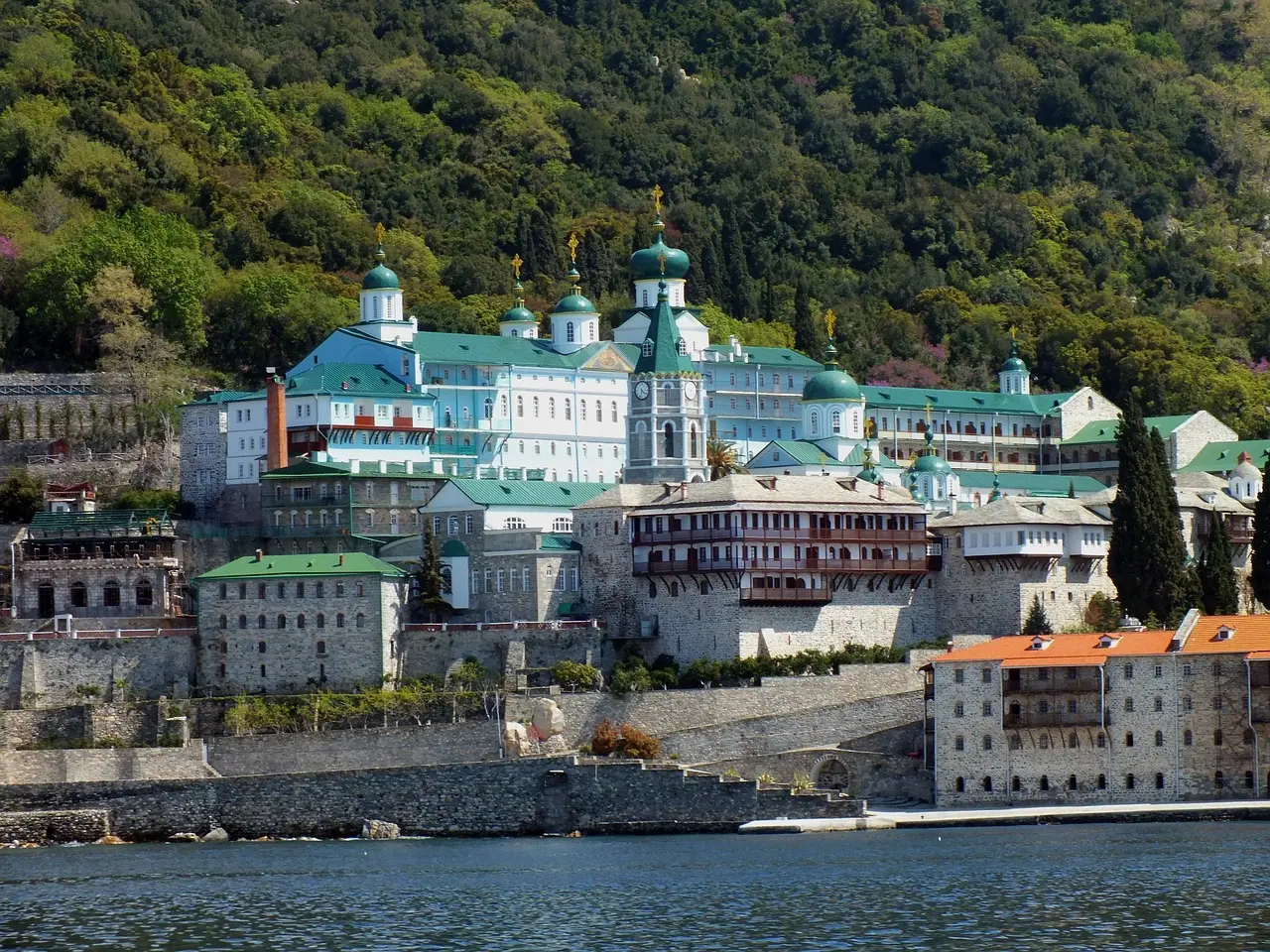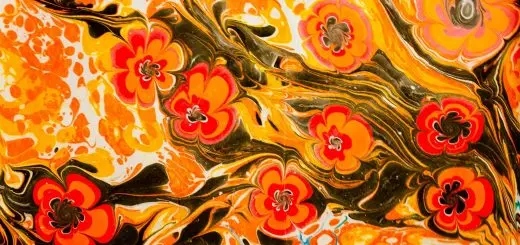Spiritual Significance of Mount Athos: the Monastic Republic

Looking for more amazing products? Check out our online store and explore our collection here! Happy shopping!
Before diving in, please note: This post is for informational purposes only. If you’d like to know more about how we approach topics, feel free to check out our friendly Disclaimer Page.
Hey there, amazing readers! 
We’re committed to delivering quality posts, and your support (even just sticking around despite the ads) means everything to us. So, bear with us, and thanks for helping us keep the good vibes rolling. Now, on to the fun stuff!
TRANSLATE BUTTON AT THE END OF THE ARTICLE
Mount Athos, often referred to as the “Monastic Republic,” is a place shrouded in mystery and spirituality.
Nestled on the northeastern coast of Greece, this isolated peninsula is a haven for Orthodox Christian monks seeking a life of devotion and asceticism.
In this extensive article, we will delve deep into the spiritual significance of Mount Athos, exploring its rich history, the unique monastic community that inhabits it, and the profound impact it has had on the spiritual world.
A Sacred Landscape: The Geographical Marvel of Mount Athos
Mount Athos is a geographical marvel, a rugged and mountainous peninsula that stretches approximately 33 miles into the Aegean Sea.
It is a UNESCO World Heritage Site and is often described as the “Holy Mountain.” This unique geographical location has played a crucial role in the spiritual significance of the area, creating a sense of isolation that allows monks to live in contemplation and solitude.
The peninsula is a pristine sanctuary, with lush forests, clear streams, and abundant wildlife.
It provides an ideal backdrop for the monks to connect with nature, deepening their spiritual connection to the divine.
The breathtaking landscapes of Mount Athos serve as a constant reminder of God’s grandeur, inspiring monks and visitors alike to seek a deeper understanding of their faith.
Historical Roots: Tracing the Origins of Mount Athos
The history of Mount Athos is deeply intertwined with the history of Christianity.
Its spiritual significance can be traced back to the 9th century when the first monks settled here.
The Byzantine Emperor, Constantine IX Monomachos, granted the monks permission to establish a monastic community on the peninsula, which marked the official beginning of monastic life on Mount Athos.
Over the centuries, the monastic community on Mount Athos has thrived, facing various challenges but always persevering.
Today, it stands as a living testament to the enduring power of faith and spirituality.
Its historical roots are a testament to the enduring nature of faith in the face of adversity.
The Monastic Community: A Life of Prayer and Contemplation
Mount Athos is home to a vibrant monastic community comprising 20 major monasteries, 12 sketes, and numerous hermitages.
The monks who reside here lead a life of unwavering dedication to God.
They follow a strict daily routine that includes hours of prayer, meditation, and manual labor.
One of the most iconic aspects of Mount Athos is the architecture of the monasteries.
Each monastery is a masterpiece of Byzantine art and architecture, adorned with magnificent frescoes, intricate mosaics, and ancient manuscripts.
These monastic buildings serve as a testament to the artistic and spiritual achievements of the monks who have called Mount Athos home.
The intricate artwork and spiritual significance of these monasteries make them not only centers of devotion but also cultural treasures.
The monastic community’s daily life is a reflection of their commitment to faith.
Their days are punctuated by the sound of church bells, which call them to prayer.
The monastic routine consists of a rigorous schedule of prayer services and manual labor, which includes tending to the gardens, cooking, and maintaining the monastic buildings.
This structured lifestyle is designed to foster discipline and deepen their spiritual connection.
Spiritual Practices: The Heart of Mount Athos
The monks on Mount Athos follow a rigorous spiritual regimen that is rooted in Orthodox Christianity.
This regimen includes the chanting of psalms, participation in the Divine Liturgy, and the practice of hesychasm, a form of silent prayer and contemplation.
Hesychasm is at the heart of their spiritual practice and is a way to cultivate inner stillness and union with God.
Hesychasm, in particular, is central to the spiritual life on Mount Athos.
It involves seeking inner stillness and union with God through repetitive prayer, often using the Jesus Prayer as a mantra.
This practice is believed to lead to theosis, the gradual transformation of the human being into a divine likeness.
The repetitive, meditative nature of hesychasm is a profound way for the monks to connect with the divine and embark on their spiritual journey.
The act of prayer is not confined to the monastic cells and chapels; it permeates every aspect of life on Mount Athos.
The monks are engaged in a continuous dialogue with God, seeking His presence in every moment, every task, and every breath.
This continuous prayer is a reminder of the profound spiritual devotion that defines life on the Holy Mountain.
A Living Tradition: The Influence of Mount Athos
The spiritual significance of Mount Athos extends far beyond its geographical boundaries.
The Monastic Republic has had a profound influence on Orthodox Christianity and has been a source of inspiration for countless believers around the world.
Pilgrims from various corners of the globe visit Mount Athos to seek spiritual guidance and experience the unique atmosphere of devotion and holiness.
Moreover, the monks of Mount Athos have been instrumental in preserving and transmitting the spiritual and cultural heritage of the Orthodox Church.
Their manuscripts, libraries, and artistic creations have been invaluable in safeguarding the teachings and traditions of the faith.
The monastic libraries on Mount Athos house an extensive collection of ancient texts, including rare manuscripts, theological treatises, and historical records.
These treasures are a testament to the enduring commitment of the monks to preserving the spiritual heritage of Orthodoxy.
The impact of Mount Athos on the Orthodox world is immeasurable.
It serves as a spiritual compass, guiding believers in their quest for a deeper understanding of faith.
The wisdom and teachings of the monks resonate with the faithful, offering insights into the profound mysteries of Christianity.
Challenges and Controversies: The Modern Era of Mount Athos
While Mount Athos is a bastion of spiritual purity and tradition, it has not been immune to the challenges of the modern world.
The monastic community has faced issues such as maintaining a delicate balance between isolation and outreach, as well as addressing matters of governance and administration.
Nevertheless, the spiritual essence of Mount Athos endures, and the monks continue to lead a life of prayer and dedication to God.
The challenges facing Mount Athos in the modern era are a reflection of the broader societal shifts occurring worldwide.
The tension between preserving centuries-old traditions and adapting to the demands of the contemporary world is a delicate balance that the monks must navigate.
The monks are confronted with decisions regarding infrastructure, communication, and governance that can impact their way of life while striving to preserve the timeless spiritual practices that define Mount Athos.
Conclusion: Mount Athos – A Beacon of Spirituality
In conclusion, Mount Athos, with its rich history, unique geographical setting, and profound spiritual practices, stands as a beacon of spirituality in a rapidly changing world.
The Monastic Republic is a testament to the enduring power of faith, prayer, and contemplation.
Its influence extends beyond the peninsula, inspiring countless individuals to seek a deeper connection with the divine.
As we reflect on the spiritual significance of Mount Athos, we are reminded of the importance of preserving our spiritual heritage and embracing the timeless practices that bring us closer to God.
Mount Athos is not just a place; it is a living testament to the enduring quest for spiritual enlightenment.
It is a sanctuary where the ancient rhythms of prayer and devotion continue to echo through the ages, inviting us to explore the depths of our faith and seek a profound connection with the divine.
FAQs
1.
Can women visit Mount Athos?
No, Mount Athos has a long-standing tradition of excluding women from the peninsula.
This rule is based on religious and historical reasons and is meant to maintain the monastic focus on prayer and asceticism.
2.
Are there any restrictions for visitors to Mount Athos?
Yes, there are specific entry requirements for non-resident visitors, including obtaining a special permit, being over 18 years of age, and adhering to a dress code.
Women are generally not allowed to visit the peninsula.
3.
How do monks sustain their monastic life?
Monks on Mount Athos sustain their monastic life through a combination of self-sufficiency, donations from pilgrims, and the sale of religious items and agricultural products they produce.
The monastic community practices a form of self-reliance that reflects their commitment to simplicity and humility.
4.
Is it possible to stay as a guest on Mount Athos?
Yes, it is possible for male pilgrims to stay as guests in some of the monasteries on Mount Athos, but this requires prior arrangements and adherence to monastery rules.
The monasteries often welcome male visitors for short stays, allowing them to experience the monastic way of life.
5.
What is the significance of the “Holy Fire” on Mount Athos?
The “Holy Fire” is a miracle that occurs every year on Orthodox Holy Saturday.
It is believed to emanate from the tomb of Jesus in Jerusalem and is brought to Mount Athos, symbolizing the resurrection of Christ.
The “Holy Fire” is a momentous event for the monks and pilgrims on the peninsula, signifying the triumph of light over darkness.
6.
How can one become a monk on Mount Athos?
Becoming a monk on Mount Athos is a lengthy and rigorous process.
It involves a period of candidacy, followed by novitiate, and finally, tonsure.
Only Orthodox Christian men who meet certain criteria are accepted into the monastic community.
The process of becoming a monk on Mount Athos is a profound and life-altering journey, requiring a deep commitment to faith and a willingness to embrace the ascetic way of life.
7.
Can non-Orthodox Christians visit Mount Athos?
Yes, non-Orthodox Christian men can visit Mount Athos, but they must adhere to the rules and regulations of the monastic community and show respect for its religious traditions.
While the peninsula is primarily a place of Orthodox Christian worship, it welcomes visitors from other Christian denominations who seek to experience the spiritual atmosphere of Mount Athos.

The Enlightenment Journey is a remarkable collection of writings authored by a distinguished group of experts in the fields of spirituality, new age, and esoteric knowledge.
This anthology features a diverse assembly of well-experienced authors who bring their profound insights and credible perspectives to the forefront.
Each contributor possesses a wealth of knowledge and wisdom, making them authorities in their respective domains.
Together, they offer readers a transformative journey into the realms of spiritual growth, self-discovery, and esoteric enlightenment.
The Enlightenment Journey is a testament to the collective expertise of these luminaries, providing readers with a rich tapestry of ideas and information to illuminate their spiritual path.
Our Diverse Expertise
While our primary focus is on spirituality and esotericism, we are equally passionate about exploring a wide range of other topics and niches 

To ensure we provide the most accurate and valuable insights, we collaborate with trusted experts in their respective domains 
Our blog originally focused on spirituality and metaphysics, but we’ve since expanded to cover a wide range of niches. Don’t worry—we continue to publish a lot of articles on spirituality! Frequently visit our blog to explore our diverse content and stay tuned for more insightful reads.
Hey there, amazing reader! 
Check out our store here and take a peek at some of our featured products below! Thanks for being awesome!











